White rust, also known as white blister or stag-head, is a plant disease that affects cruciferous plants.
These cruciferous plants are members of Brassicaceae that is the cabbage family, and they include vegetables like Kale, Cauliflower, Broccoli, and Brussels sprout.
In this article, we will be addressing questions like:
- What is white rust disease?
- How do you treat white rust on plants?
- How do I identify white rust infection?
- Etc.
So let's get started!
Table of Contents
What is White Rust?
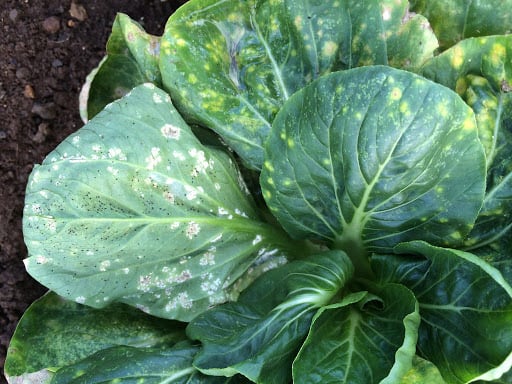
White rust is a plant disease that causes chalky white spore masses on the underside of plant leaves.
These spore masses, known as sori, are formed on the dermis of plant leaves and cause damage to the leaf when a gardener tries to scrape them off.
Although white rust rarely kills an infected plant, it dramatically reduces the plant’s health and vigor. Its flower production is affected as well, while its leaves and stems are deformed.
White rust disease is caused by plant-loving fungi. These fungi thrive in moist and damp conditions and are spread from infected plants to healthy plants through wind or water.
Watering often serves as a vehicle for the spread of white rust disease, because damp surfaces are needed for infections to occur.
Plants like cauliflower and broccoli, when infected by white rust, produce deformed heads and sterile seeds. These seeds can no longer be used for planting in the next farming season. White rust does a lot of damage.
How to Identify White Rust on Plants
White rust disease comes in different forms and affects a wide range of plants, including turnip. Gardeners often complain about the incidence of white rust on their turnip plants.
Symptoms of rust diseases vary with the host plant so that you would see slightly different symptoms with each plant.
Generally speaking, white rusts match their name; they look like rusts on exposed metals. The following are direct symptoms that would appear on your plants if they are infected with white rust disease.
Yellow patches appear on the upper surface of the plant leaves. These yellow patches develop into blister-like swellings on the underside of the leaves and produce powdery masses of spores.
Pustules, which are reddish to orange blister-like swellings, may also occur on the upper surface of the leaf.
Specifically, the upper sides of the leaves have faint yellow spots, while the bottom side of the leaves has white pustules directly opposite the yellow ones.
Leaf defoliation and distortion also occur so that you might lookout for that as well.
Read Also: How To Plant Portobello Mushrooms
How to Treat White Rust on Plants
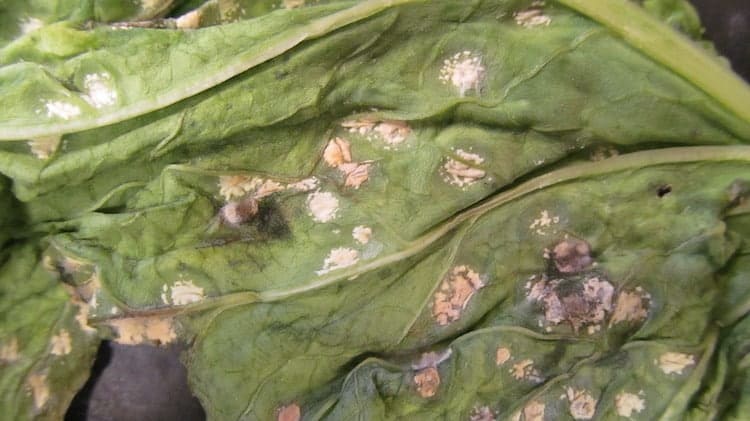
White rust must be treated at the first of the symptoms. The various methods of controlling white rust, treating white rust, and preventing white rust are all organic.
There are no known specific fungicides used to treat white rust on plants; however, fungicides used in treating downy mildew have proven to be effective against white rust.
The following are organic remedies for treating white rust in plants;
1. Use Baking soda
Mix .25 ounce of baking soda to a gallon of water. Spray the mixture on infected plants.
The mixture will help stop the growth of fungi but will not kill them, and when the mixture washes away, the fungi grow back.
There is evidence that baking soda solution causes damage to foliage and causes sodium buildup in the soil when washed into the soil; therefore, it is advised that the solution is sparingly sprayed on plants.
2. Use Neem Oil
Neem oil is derived from neem seeds, and it’s effective as a natural fungicide. Neem oil is bio-degradable, not harmful to humans, pets, birds and beneficial insects, but toxic to fishes.
To get rid of white rust on plants using neem oil, spray enough amount of neem oil on plant leaves on a day that is dry and not windy. Spray the plants every week to completely get rid of the fungi.
To prevent a further recurrence of white rust on the plant, spray neem oil every two weeks or one week during humid weather conditions.
3. Baking Soda Mixed with Horticultural Oil
Soda mixed with horticultural oil is effective in controlling and getting rid of fungi. Mix three tablespoons of horticultural oil and one and a half spoon of baking soda in one gallon of water. Mix all three in a spray bottle.
Spray the mixture on the stems and leaves of an infected plant, until the plant is dripping wet. During summer, spray the plant every two weeks.
On rainy days, do not spray horticultural oils on young shoots and open flowers.
Read Also: Best Mulch For Garden
4. Sulfur powder or spray
Sulfur, as a natural product, is effective in keeping white rust and other fungal infections away from plants and from spreading to other healthy plants.
Sulfur powders or sprays come in commercial packs and should be used according to the manufacturer’s guide and specifications.
As a general rule of thumb, sulfur products are not to be applied to plants when the temperature is above 85F, and when an oil spray has been applied to the plant in less than one month before.
This means that you should wait until after a month after applying oil spray to your plants before you can apply sulfur products on them.
Sulfur is non-toxic to humans, but you should wear a respirator during the application, and keep away from skin and eye contact.
How to Prevent White Rust on Plants
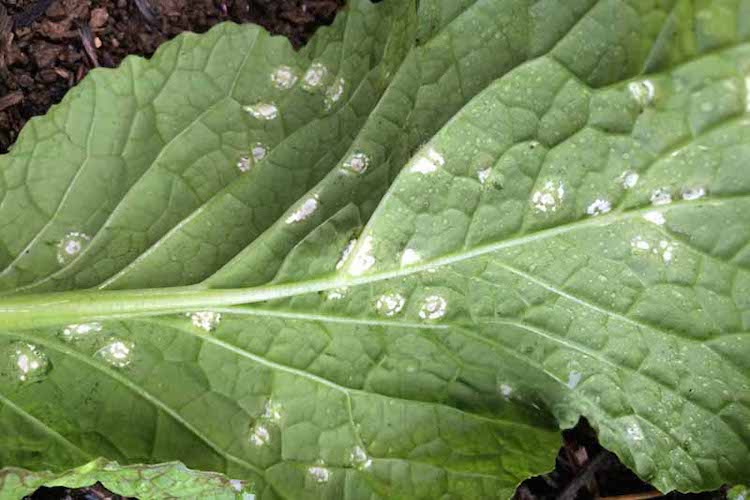
There are two approaches to preventing white rust on plants. Before we get on to them, it is essential to understand the reproductive process of fungi.
Fungi reproduce by producing spores. These spores are microscopic and can develop into a full-blown fungus and establishing its colony on either leaves or stems.
Due to the microscopic size of spores, they are easily carried from one plant to another, from a garden to another, by water or wind.
These spores also come in protective covers that enable them to withstand harsh weather conditions. When the weather is right for them, they come out of hibernation and blossom.
Now the first approach to preventing white rust in a plant is to get rid of likely places the spores would be hiding.
Garden debris should be gotten rid of, and infected plant debris should be disposed of far away from the garden.
Another means is to till the land. Tilling ensures that the spores do not have a favorable condition to blossom; that way, they stay inactive and unable to cause white rust on plants.
The second approach to preventing white rust on plants is crop rotation. A bed that has harbored infected plants should not have cruciferous vegetables planted in it for at least three years.
Conclusion
Rusts love moist conditions, so avoid overwatering your plants. When you water your plants, use drip irrigation as it would help keep water away from the foliage.
When you buy new seeds for planting, isolate them from the rest for a while to ensure that they are disease-free and do not contaminate other healthy seeds.
Above all, keep a clean garden and leave no favorable conditions for spores to blossom into white rust on plants.
Read Also:
- Benefits of Perlite in a Garden
- How To Get Rid Of Thrips On Hibiscus
- Will Vinegar Kill Aphids on Hibiscus?
- How to Save Plants from Frost Damage
- Does Diatomaceous Earth Kill Fungus?


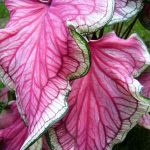
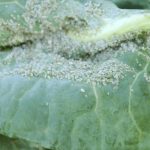
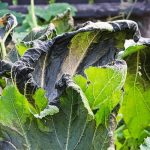
Leave a Reply